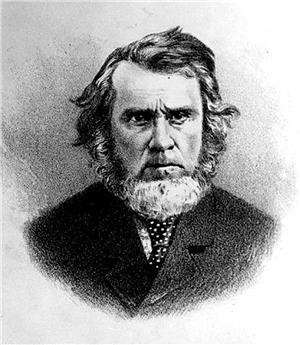On December 1, 1883, the only town in the Yakima Valley is incorporated as Yakima City. Four hundred settlers live there. In 1917 Yakima City will change its name to Union Gap.
Early Days
Settlement of the Yakima Valley began in earnest in 1861 with the arrival of Margaret and Fielden Mortimer Thorp (1822-1893). The confinement of Yakima (later Yakama) Nation peoples to a reservation following the conclusion of the 1855-1858 Yakima Indian Wars and the establishment of Fort Simcoe in 1856, together with the signing of the 1855 Treaty of Yakima, opened the region to settlement.
In 1883, the Northern Pacific Railroad announced that it would bypass Yakima City and build a station four miles northwest of the town. In 1884, the 100 town buildings were moved to the site of the railroad station, and the town became known as North Yakima. On January 27, 1886, it became the seat of Yakima County, which had been established in 1865. In 1918, North Yakima became simply Yakima, and the original Yakima City town site changed its name to Union Gap.
Two stores formed the core of the original Yakima City settlement: the O. D. and George Barker store, established in 1869, and the George Goodwin store, established in 1870. Charles and Joseph Schanno soon opened a third store. It was around these businesses that the town began to grow.
Sources:
Gary L. Jackson, Remembering Yakima: By Those Who Were There (Yakima, WA: Golden West Publishing Company, 1975), 12; Workers of the Writers' Program of the Work Projects Administration in the State of Washington, with additional material by Howard McKinley Corning, The New Washington: A Guide to the Evergreen State, Revised Edition (Portland: Binfords & Mort, 1950), 301; "Access Yakima: The Official City of Yakima Website," (http://www.ci.yakima.wa.us/info/history/); "Three New Towns on Map of State," The Seattle Times, June 7, 1917, p. 11.
Note: This file was corrected on September 21, 2005, and November 30, 2015.
Licensing: This essay is licensed under a Creative Commons license that
encourages reproduction with attribution. Credit should be given to both
HistoryLink.org and to the author, and sources must be included with any
reproduction. Click the icon for more info. Please note that this
Creative Commons license applies to text only, and not to images. For
more information regarding individual photos or images, please contact
the source noted in the image credit.

Major Support for HistoryLink.org Provided
By:
The State of Washington | Patsy Bullitt Collins
| Paul G. Allen Family Foundation | Museum Of History & Industry
| 4Culture (King County Lodging Tax Revenue) | City of Seattle
| City of Bellevue | City of Tacoma | King County | The Peach
Foundation | Microsoft Corporation, Other Public and Private
Sponsors and Visitors Like You

